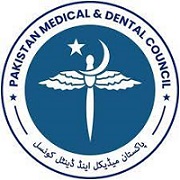ANTIBIOGRAM OF STAPHYLOCOCCUS AUREUS AMONG CLINICAL ISOLATES AT A TERTIARY CARE HOSPITAL IN LAHORE
Abstract
Background and Objectives: The importance of Staphylococcus aureus as a persistent nosocomial and
community acquired pathogen has become a global health concern. It has a remarkable
ability of evolving mechanisms Antibiogram of Staphylococcus Aureus
of resistance to most antimicrobial agents.
The global spread of Methicillin Resistant Staphylococcus aureus (MRSA) constitutes one
of the most serious contemporary challenges to the treatment of hospital-acquired
infections.
This study was conducted to screen and assess the antibiotic susceptibility pattern
of Staphylococcus aureus isolated from clinical specimens and determining prevalence of Methicillin Resistant Staphylococcus aureus (MRSA).
Methods: This was a retrospective descriptive study in which data of all clinical isolates reported as S aureus from 1st November 2019 to 31stOctober 2020 was collected through the electronic medical records system of Shalamar Teaching Hospital. Record of antibiotic susceptibility profile was categorized and analyzed.
Results: A total of 149 S. aureus isolates were reported during the mentioned period. Out of those isolates 4.7% were sensitive to Ampicillin, 20% to Ciprofloxacin, 51% to Clindamycin, 40% to Cefuroxime, 14% to Erythromycin, 64% to Fusidic Acid, Fosfomycin showed 6.0% sensitivity, Nitrofurantoin 89%, Cefoxitin 45.0%,Gentamicin 72.5%, Linezolid 100%, Co-trimoxazole 33%,Teicoplanin 100%, and Vancomycin 100%.
Conclusions: According to this study Vancomycin, Teicoplanin and Linezolid are still the most
effective drugs that could be chosen for the treatment of S. aureus infections, as all isolates show 100% susceptibility to these antibiotics.






